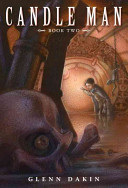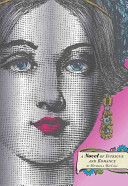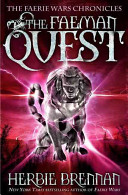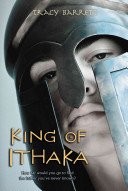
Seventeen-year-olds Maddy Fisher and Rich Ross yearn for love, and after their first attempts at relationships go awry, they find one another and form a deep bond that can only be expressed one way.
Material appropriate for young adults

Seventeen-year-olds Maddy Fisher and Rich Ross yearn for love, and after their first attempts at relationships go awry, they find one another and form a deep bond that can only be expressed one way.

Dr. Saint is no more, Lord Dove has disappeared, and the Dodo has slipped back into seclusion. But for Theo Wickland, descendent of the Victorian crime fighter of legend, The Candle Man, the adventure is just beginning. Now head of the Society of Good Works, Theo is determined to turn the activities of the order toward the betterment of humanity, starting with bringing the Network, the fascinating, secret underground maze of tunnels, back to its former glory. But dark forces still lurk below the London streets–mysterious–creatures, and enemies of the Candle Man, long thought dead. They continue to plot the downfall of the world. Old enemies become new allies as Theo cobbles together a group to stop the sinister plans of these evil beings before they prove deadly. It is up to the new Candle Man and his Society of Dread to snuff out these nefarious plans, before it’s too late.

CHERUB agents are highly trained, extremely talented–and all under the age of seventeen. For official purposes, these agents do not exist. They are sent out on missions to spy on terrorists, hack into crucial documents, and gather intel on global threats—all without gadgets or weapons. It is an extremely dangerous job, but these agents have one critical advantage: adults never suspect that teens are spying on them. In THE DEALER, James is on his most daring mission yet: to smack down the world’s most powerful drug lord. It means hitting the streets, where the dealers work.

Recently orphaned and destitute, seventeen-year-old Liza Hastings earns a position as a lady’s maid to sixteen-year-old Princess Victoria at Kensington Palace in 1836, the year before Victoria becomes Queen of England.

Stubborn and feisty Mella, the half-faeire half-human daughter of Lord Henry and Queen Holly Blue, has the power to determine the fate of both the faerie and “analogue world” when she travels to the country of Haleklind and discovers rebel forces preparing for war.

Telemachos has a comfortable life on his small island of Ithaka, where his mother Penelopeia keeps the peace even though the land has been without its king, his father Odysseus, since the Trojan War began many years ago. But now the people are demanding a new king, unless Telemachos can find Odysseus and bring him home. With only a mysterious prophecy to guide him, Telemachos sets off over sea and desert in search of the father he has never known.
Everything changes for Chris one August evening when red-haired, freckle-faced Johnny turns up on a bicycle, but who is Johnny and why do the police have his bicycle and other belongings?

A collection of eight stories, most previously published in other anthologies, about what it is like to grow up in the Middle East today.

When Sarah Glidden took a “Birthright Israel” tour, she thought she knew what she was getting herself into. But when she got to Israel, she found that things weren’t quite so simple. HOW TO UNDERSTAND ISRAEL is Sarah’s memoir not only of her Israeli government sponsored trip through Tel Aviv, Jerusalem, the Golan Heights, Masada and other famous locations, but of the emotional journey she never expected to take while she was there. Her experience clashes with her preconceived notions again and again, particularly when she tries to take a non-chaperoned trip into the West Bank. Sarah is forced to question first her political beliefs and, ultimately, her own sense of identity, until she finds that to understand Israel she first must come to understand herself.
Sensei Ki-yaga leads Niya and the other students of the Cockroach Ryu on a journey to beg the feudal Emperor to stop war from breaking out between the mountain ryus, putting to the test the firm friendship and unusual skills of these physically-disabled samurai-in-training.